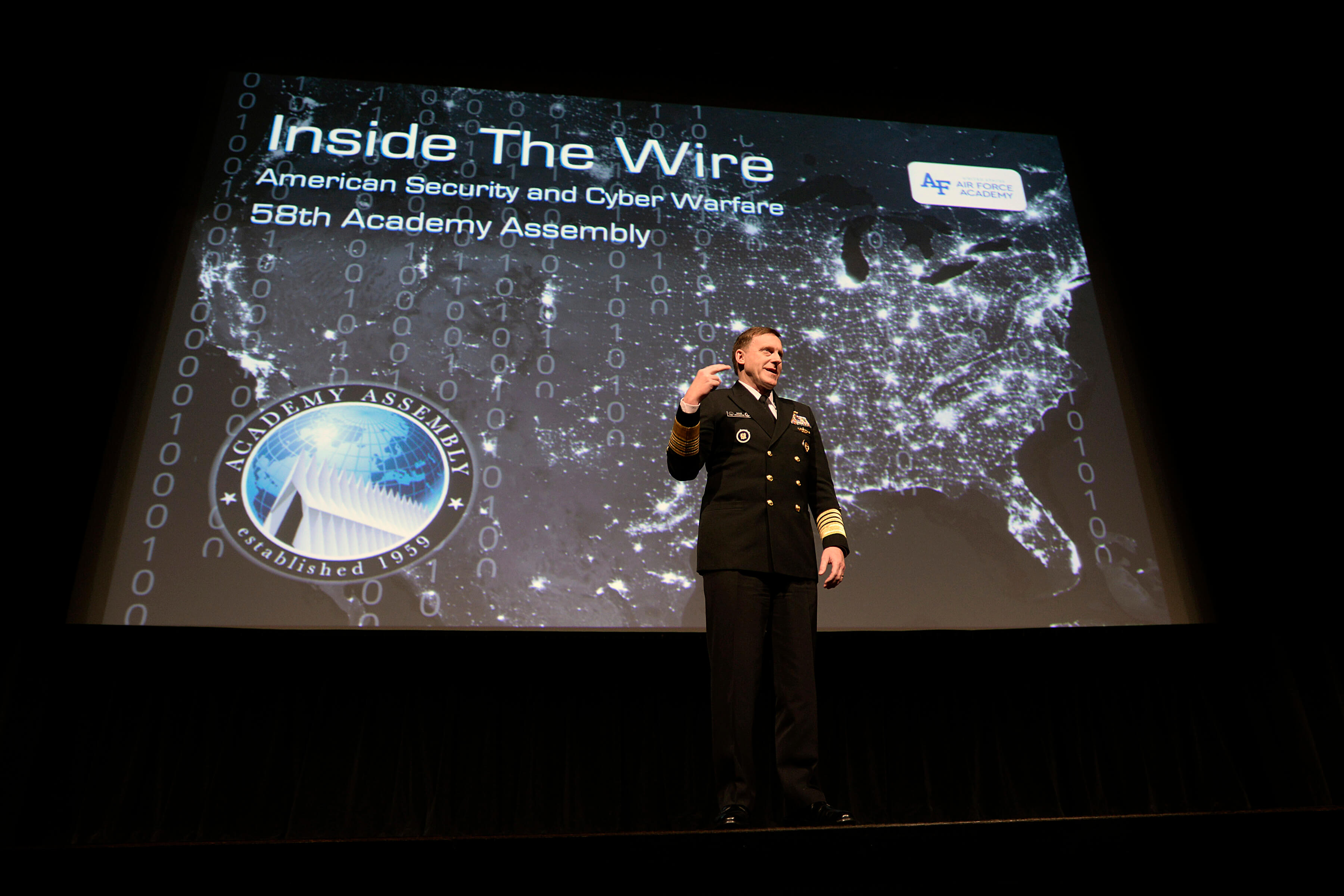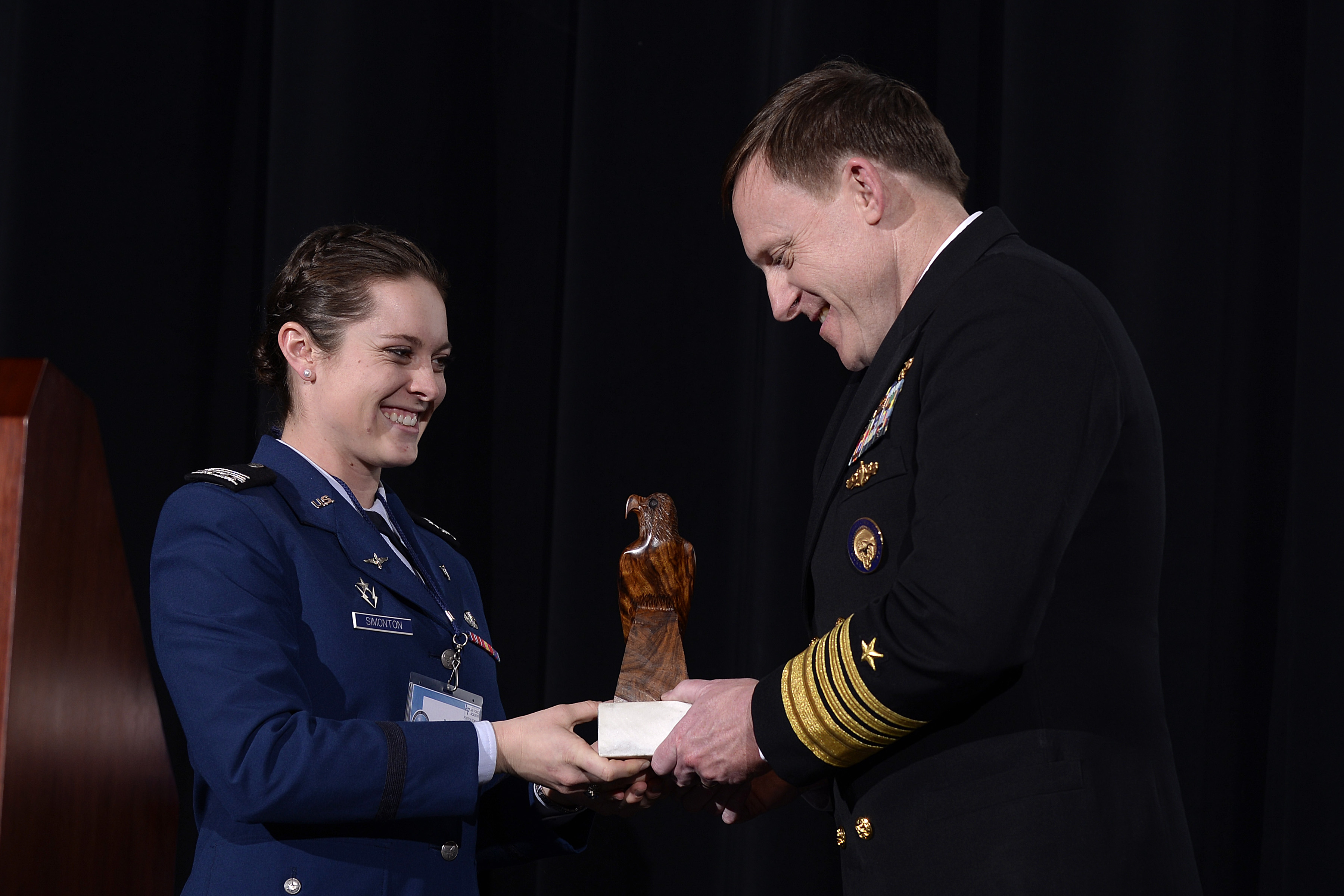Cyber Command’s top officer speaks at Academy Assembly: Speed, agility needed in cyber realm, says Adm Rogers
By John Van Winkle, U.S. Air Force Academy Public Affairs / Published March 20, 2017.
U.S. AIR FORCE ACADEMY, Colo. —
The commander of U.S. Cyber Command gave cadets and faculty here an inside look into the cyber-warfare world during his March 15, 2017 visit to the 58th Academy Assembly.
Convened annually since 1959, the assembly is an undergraduate-led conference held by the U.S. Air Force Academy and organized by its Political Science Department.
Cadets and faculty organize and take part in a three-day discussion focusing on a major theme in American foreign policy. This year’s theme was “Inside The Wire: American Security and Cyberwarfare.”
The assembly ran March 14-17 and featured Adm. Mike Rogers as its keynote speaker. The admiral fulfills three roles: director of the National Security Agency; commander of U.S. Cyber Command; and chief of the Central Security Service.
Rogers introduced the audience to cyber as in a broad, strategic concept, and opened the floor for 30 minutes of questions from the assembly’s audience.
There has always been a broad international dimension to this,” he said. “One of the inherent challenges in cyber is that it doesn’t recognize geography.”
In previous wars, U.S. military combatant commands have been organized into geographic areas of responsibility, Rogers said.

Adm. Mike Rogers, director of the National Security Agency, commander of U.S. Cyber Command commander and chief of the Central Security Service, speaks at the Academy Assembly March 15, 2017, at the U.S. Air Force Academy. The assembly is an annual conference led by undergraduates and organized by the Academy’s Political Science Department. (U.S. Air Force photo/Mike Kaplan)
“Cyber doesn’t recognize this,” he said. “The growth of the network, the digital highways out there — they are not defined by these lines we draw on a map. It’s not structured that way. If you look at the hack the North Koreans conducted against Sony in November 2014, and as we retrace this thing, this went through about five combatant commanders’ regions. So you tell me how we’re going to break this up into five or more different segments? It’s just not going to work that way. You can’t get to speed and agility that way. Speed and agility are everything in cyber. Those are cornerstone principles.”
Another cornerstone of cyber warfare is international collaboration, Rogers said.
“There’s already a huge amount of international cooperation,” he said. “Just from the military perspective and not getting into specifics, we work closely with a host of partner-nations out there today and every day, defensively and offensively. As a nation, we’ve been engaged for an extended period of time in a cooperative international dialogue on ideas like cyber norms, strategic principles and how we get to deterrence. There has always been a broad international dimension to this.”
Because of this international dimension, the solution-sets the DoD must come up with have to work at home and with U.S. allies, Rogers said. Those mission outcomes from the DoD cyber community must generate a greater range of options and capabilities for combatant commanders and policymakers. This comes from the capabilities and ingenuity of dedicated cyber professionals working as a team — not from a technological silver bullet, he said.
“Technology is incredibly important, but it’s not the end-all be-all,” Rogers said. “We’ve got to think our way through these problem-set. We’re not going to invent our way out of it. It will take motivated men and women with the right technical and operational skills, strong leadership, good judgment and people who know how to work in a team — how to prioritize, and how to deal with risk. As a commander, that’s what I find is the essence of my life right now. It’s all about how you prioritize the cyber mission-set with your agency and, more broadly the nation, and where you decide to take risk, because there is always risk. I wish I could tell you that there’s the perfect solution out there, but in my experience, it does not exist.
Rogers said the problem will not be solved by any single technology-based solution.

Cadet 1st Class Mary Simonton presents Adm. Mike Rogers, the commander of U.S. Cyber Command, with a token of appreciation for visiting the U.S. Air Force Academy March 15, 2017 and speaking at the Academy Assembly. Along with his Cyber Command duties, Rogers is the director of the National Security Agency and the chief of the Central Security Service. (U.S. Air Force photo/Mike Kaplan)
“There is no one single group or organization that has all the answers,” he said. “In 36 years of commissioned military service, cyber is greatest team sport I’ve been a part of.”
Despite juggling three positions, Rogers said he considered his visited to the academy as an investment in future war-fighters
“The reason I am here is because you are the future,” he said. “I’m interested in seeing where your journey takes you, particularly with respect to cyber. As an institution, your Academy has started a computer and network security major, you are involved in multiple projects in cyber research and thought, as well as having cadets participating in internships and other programs. You are and worthy of investment.”